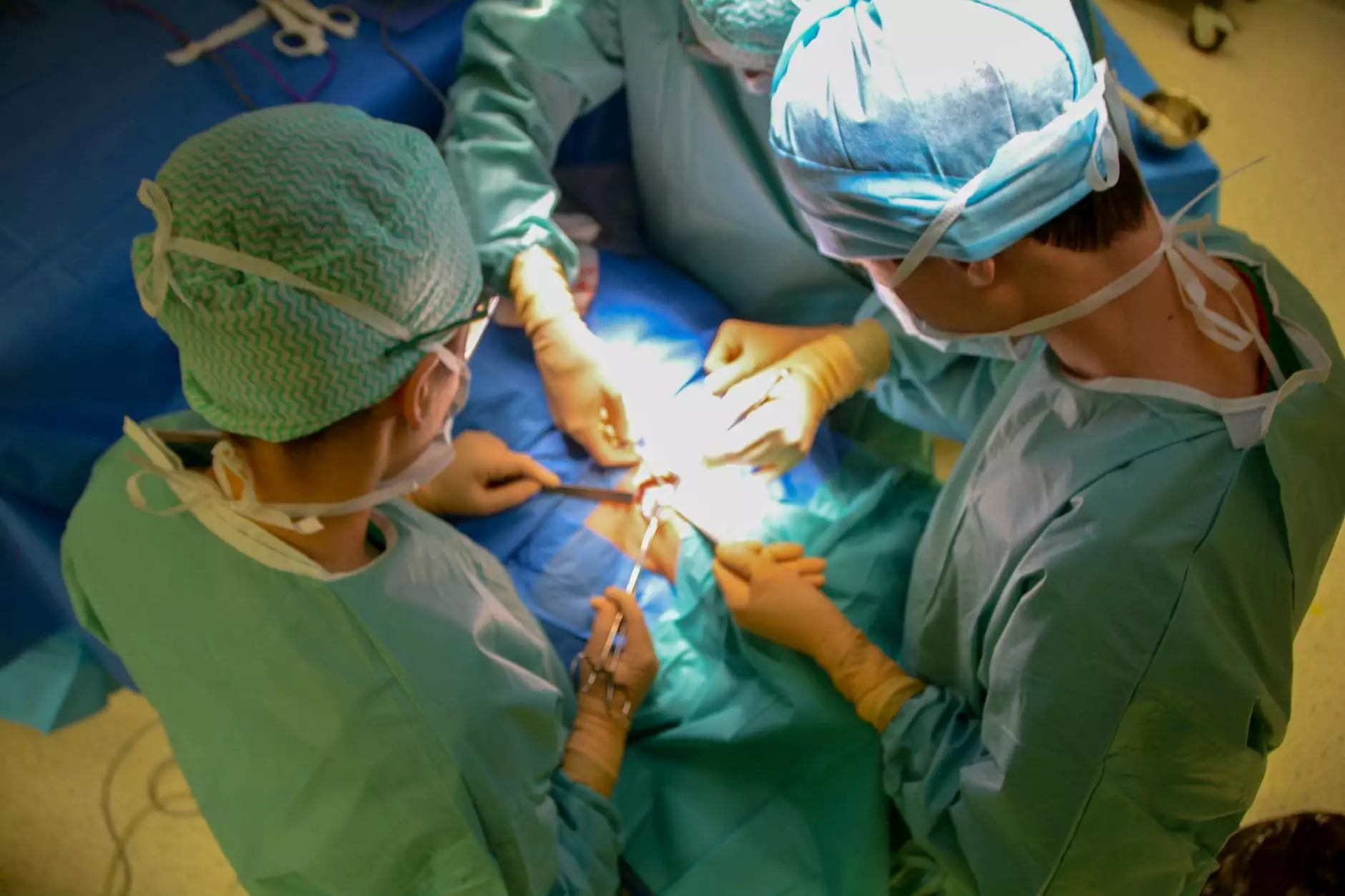Total Abdominal Hysterectomy Surgery Procedure

A total abdominal hysterectomy surgery procedure is a significant medical operation that involves the removal of the uterus and cervix through an incision in the abdomen. This extensive procedure is generally performed for various medical reasons, such as uterine fibroids, endometriosis, uterine prolapse, or abnormal uterine bleeding. This article will delve into the details of the surgery, its necessary preparations, benefits, risks, and recovery expectations—providing you with a clear understanding of what to expect.
Understanding Total Abdominal Hysterectomy
A total abdominal hysterectomy is just one form of hysterectomy, distinguishing itself by its approach and the organs removed. In this procedure, the surgeon removes:
- Uterus: The main organ for female reproduction.
- Cervix: The lower part of the uterus that opens into the vagina.
It often involves the potential removal of surrounding tissues, and sometimes, in certain cases, the ovaries and fallopian tubes may be removed, resulting in a total hysterectomy with salpingo-oophorectomy.
Indications for a Total Abdominal Hysterectomy
There are numerous reasons a patient might be recommended to undergo a total abdominal hysterectomy:
- Uterine Fibroids: Non-cancerous growths in the uterus that can cause pain and heavy bleeding.
- Endometriosis: A disorder where tissue similar to the lining of the uterus grows outside it.
- Uterine Prolapse: A condition in which the uterus slips down into the vaginal canal.
- Abnormal Uterine Bleeding: Heavy or prolonged menstrual bleeding not attributed to any underlying condition.
- Cancer: Cancer of the uterus, cervix, or other reproductive organs.
Consultation with a healthcare provider is essential to determine whether this procedure is necessary based on individual health conditions and circumstances.
Preparation for Surgery
Proper preparation for the total abdominal hysterectomy surgery procedure is crucial for ensuring a smooth operation and recovery. Here are the steps typically involved:
- Consultation: Meet with your surgeon to discuss the procedure, alternatives, and expected outcomes.
- Medical History Evaluation: Provide a complete medical history to assess risks and potential complications.
- Preoperative Tests: Blood tests, imaging studies, and other assessments to prepare for surgery.
- Medications: Be aware of any medications you should avoid prior to surgery, such as blood thinners.
- Fasting: Follow pre-surgery dietary restrictions, typically starting the night before the surgery.
- Support System: Arrange for someone to assist you during recovery, as mobility may be restricted post-procedure.
The Surgery Itself
The total abdominal hysterectomy surgery procedure generally takes 1 to 3 hours and is performed under general anesthesia. The steps involved are:
- Anesthesia Administration: You will be put under general anesthesia to ensure you are unconscious and pain-free during the operation.
- Incision: The surgeon will make a horizontal or vertical incision in the abdomen based on individual circumstances.
- Uterus & Cervix Removal: The uterus and cervix are carefully detached from surrounding structures and removed.
- Closure: After removing the uterus, the surgeon will close the abdomen using sutures or staples.
Potential Risks and Complications
As with any major surgery, potential risks exist with the total abdominal hysterectomy. Some of the complications include:
- Infection: Post-surgical infections can occur but are manageable with appropriate antibiotics.
- Excessive Bleeding: Some patients may experience excessive bleeding during or after the procedure.
- Blood Clots: There is a risk of developing blood clots in the legs or lungs following surgery.
- Damage to Other Organs: Although rare, nearby organs such as the bladder or ureters can be inadvertently damaged.
- Emotional Impact: Some patients may experience changes in hormonal balance, which can affect mood and emotional well-being.
Recovering from Total Abdominal Hysterectomy
Recovery from a total abdominal hysterectomy typically requires time and care. Here’s what patients can generally expect:
- Hospital Stay: Patients often spend 1 to 3 days in the hospital following the procedure.
- Pain Management: Pain may be managed with prescription medications as well as over-the-counter pain relievers.
- Activity Restrictions: Patients are usually advised to avoid heavy lifting and vigorous activities for several weeks.
- Follow-up Appointments: Keep scheduled follow-up appointments to monitor healing and recovery.
- Emotional and Psychological Support: Reach out for emotional support, as some may need help adjusting to changes after the surgery.
Long-term Considerations
After undergoing a total abdominal hysterectomy, several long-term considerations must be taken into account:
- Hormonal Changes: If the ovaries are removed, it may lead to menopause and associated symptoms.
- Sexual Function: Patients may experience changes in sexual function, which can often be addressed with their healthcare provider.
- Bone Health: Hormonal changes may affect bone density, necessitating lifestyle changes or medication to maintain bone health.
- Annual Check-ups: Regular medical check-ups are crucial for monitoring overall health post-surgery.
Conclusion
A total abdominal hysterectomy surgery is a pivotal choice for addressing various significant medical issues. While the procedure may seem daunting, understanding the total abdominal hysterectomy surgery procedure, its indications, and the recovery process can empower patients to make informed decisions about their health. It is pivotal to consult a qualified obstetrician or gynecologist, like those at Dr. Seckin's clinic, who can provide expert advice tailored to individual health needs and conditions.
For further information regarding this procedure or to contact expert gynecologists, do not hesitate to reach out to professionals dedicated to women's health and well-being.







